Reserve power
This is the story of how I spent the winter building reserve power sources to deal with blackouts. When the Russians began to interfere with our power grid, we started experiencing load shedding. This became a major inconvenience for our work, our children’s studies, and our daily lives. I talked to a friend, who advised me to use a hybrid solar inverter with a lithium-ion accumulator to store energy when it’s available and then recuperate it during power outages.
Switching
I purchased a couple of hybrid inverters on AliExpress and waited about a month for them to arrive. When they finally came, I was visiting my parents and had to look into the switching panel to figure out how to connect the wires correctly. There were a couple of different layouts with different inputs (single-phase, three-phase), available space, and requirements. I did four installations in total, all very different. But here is the summary of my experience:
This circuit appears to be the most flexible in the required scenarios:
- The grid is online and can power the house including the accumulator charging
- The grid is semi-functional, some phases are missing, yet the house could be powered by one phase
- The grid is off-line, a gasoline generator is used to power the house and store the excessive energy
- The generator is shut down, and the inverter is powering the house using the stored energy.
Possible combinations
The first switch is a three-pole reserve selection I-0-II. When it’s in position I, the house is connected to the grid directly. When it’s in position II, the house is connected to the reserve power source: generator, inverter output or even a single selected phase.
The second switch is a single-pole selection I-0-II, which can be used to take the power directly from the selector, or from the inverter output.
The selector is a rotary phase selection plus reserve I-0-II-0-III-0-IV-0. It allows selecting one phase from the grid or generator output.
So there are multiple use cases of the circuit, but let’s consider the most common ones.
Case 1: power grid is online
This is the normal state when cheap and powerful electricity from the grid is available. The current flows like before my intervention into the panel. It’ll allow charging the battery by selecting one of the phases and switching on the supply to the inverter input.
Case 2: some phases are missing
In case there’s some failure in the grid resulting in at least one phase available, the house could still be powered from the grid. This is suitable if the load is moderate because of multiple reasons. But yet, just one switch and a selector notch away from powering the whole house instead of just a part of the house.
Case 3: generator working, but the inverter is bypassing the power
Although it’s possible to use the gasoline generator directly, it’s more efficient to store the excess energy into the battery. The reason is that the internal combustion engine isn’t very scalable, and a significant portion of the fuel is required to just idle it. Adding more load, of course, will increase fuel consumption, but not necessarily proportionally. Moreover, the generator requires downtime maintenance: either to just refuel it or to change the oil and clean the filters.
Case 4: no external power, the inverter works off the battery
So this is the last resort when nothing else works: no grid, no generator. The inverter doesn’t produce much noise, except for the cooling fans kicking in depending on the actual load. The limitation here is the capacity of the battery. 120 Ah is more than enough to last for a couple of hours for powering lights, communication, and pumping water occasionally.
Showcase
Parent’s house
The house is powered by a single phase from the grid. A DC circuit breaker and Anderson power plug were added later.
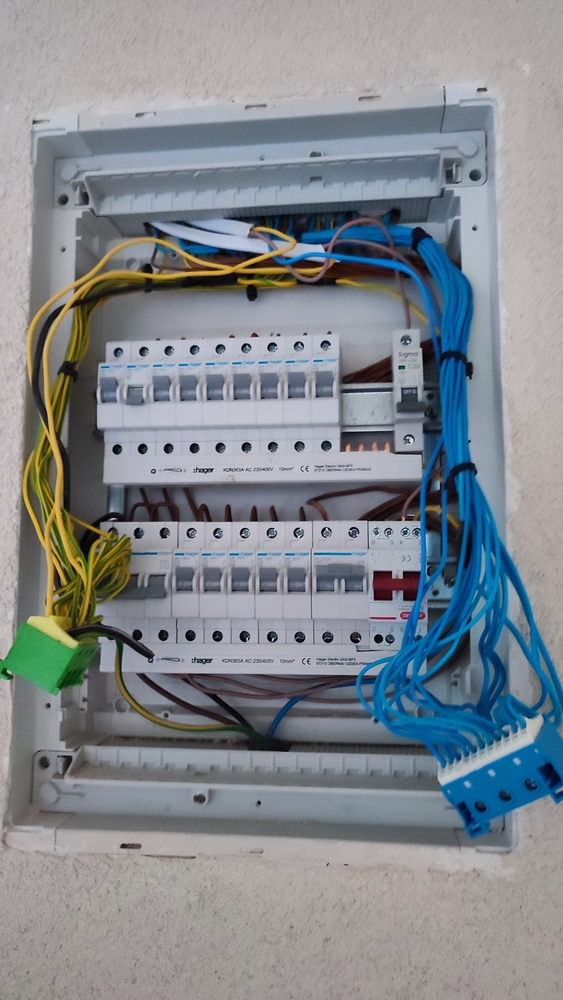
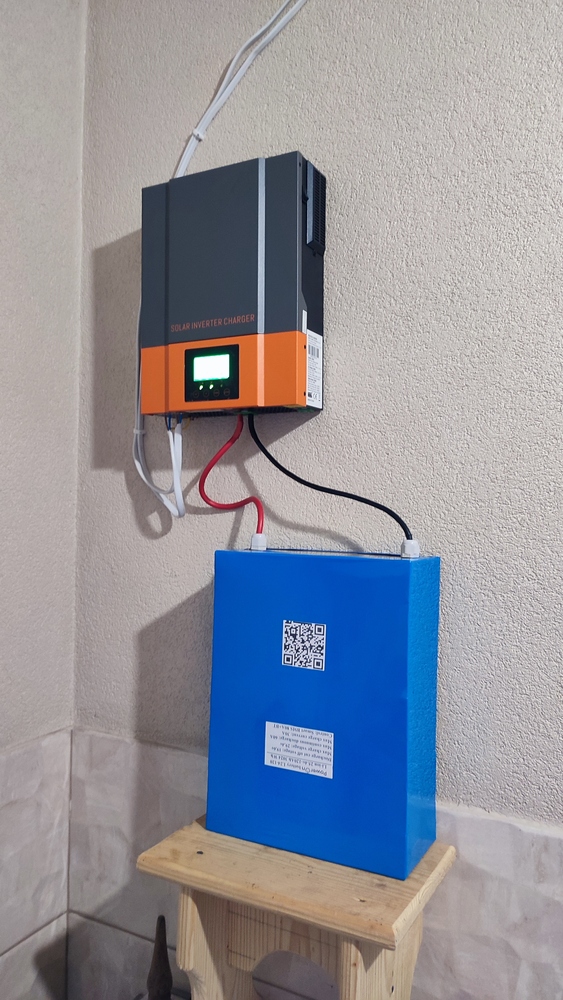
Parent-in-law’s house
Three-phase supply from the grid. Led batteries were used this time because they require less maintenance than lithium ones, and the grid electricity was more available at the time. This was the first three-phase connection and an additional box was needed to host the switches and the selector.
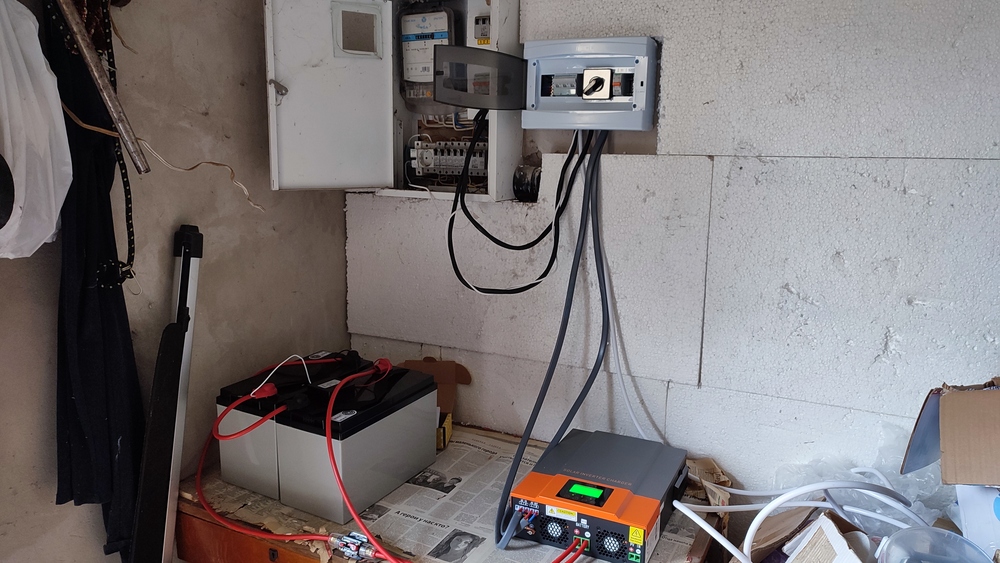
Our apartment in Kyiv
This one is a one-phase supply. The space was very limited, but still enough to add two components.
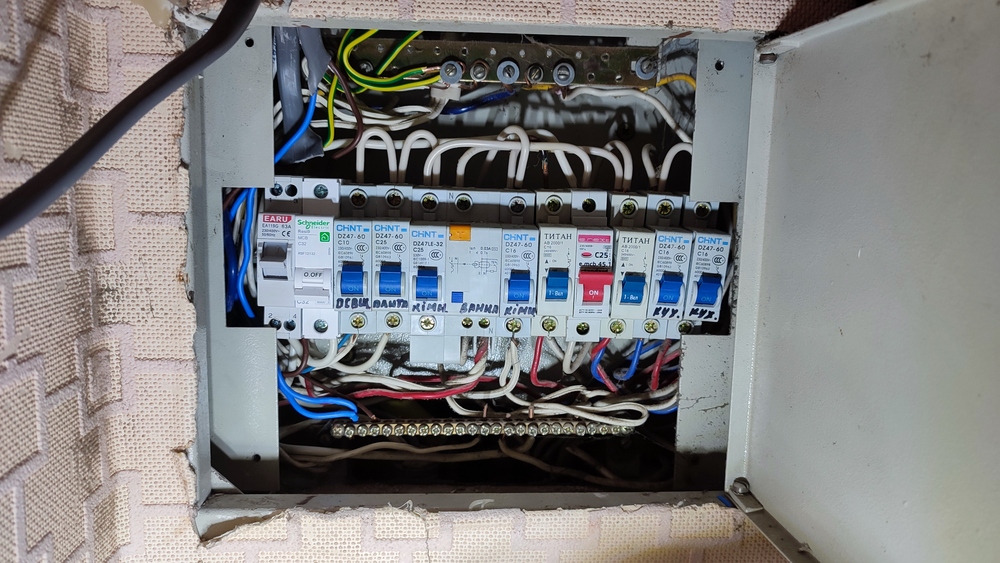
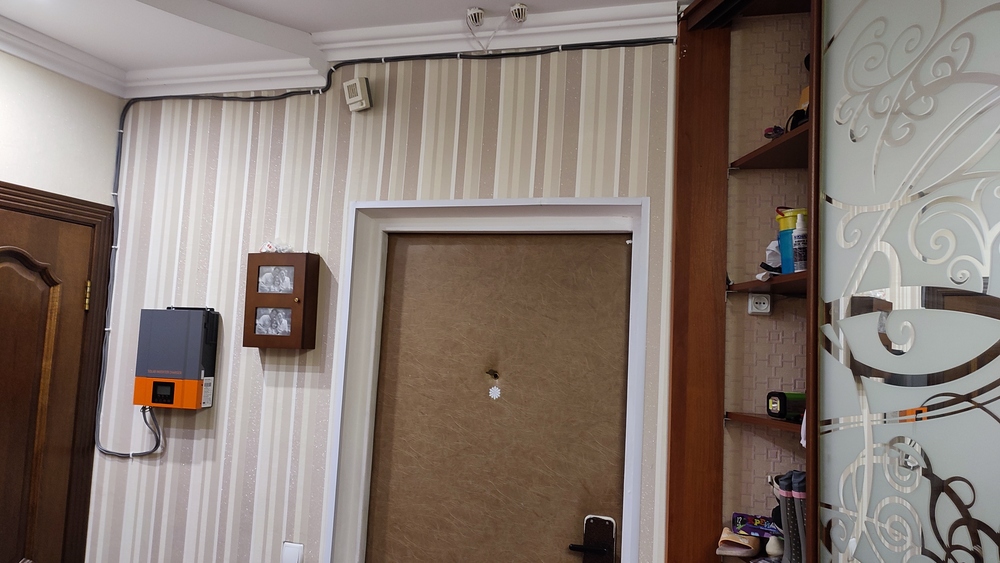
Cottage house
This time I enjoyed the benefit of available cable from the switcher panel to the utility room. The electric heater hasn’t been used and is unlikely to be utilized in the future. So I just repurposed the wires.


Portable power source
After two installations, just one inverter was left for two different places. And I realized at this point, that it’s possible to reuse both the inverter and the battery making them portable. Indeed, it only required four wires to connect the inverter: AC in, AC out, neutral and protective equipment (earthing). I chose an off-the-shelf 16A 4-wire plug assigning pins in the following way:
| Pin | Wire colour | Assignment |
|---|---|---|
| PE | █ blue | Neutral |
| 1 | █ black | AC in |
| 2 | █ yellow | PE |
| 3 | █ red | AC out |
Not only can the inverter be connected to a house via such a plug, but also an extension cable could be prepared. Now the inverter could power some equipment outdoors for some time with the charge in the battery, and even allow recharging the battery from a generator.

Issues
Special care should be taken of the generator connection. Usually, generators for F-type plugs allow connecting the load either way N-L or L-N. And this doesn’t matter for appliances. But in our case, it’s essential to match neutral and line with the switching circuit. I haven’t looked into what would happen in the case of an incorrect connection. My mitigation plan so far was to use asymmetric type F plugs, and double checking the line status with a one-contact test light or non-contact voltage detector.